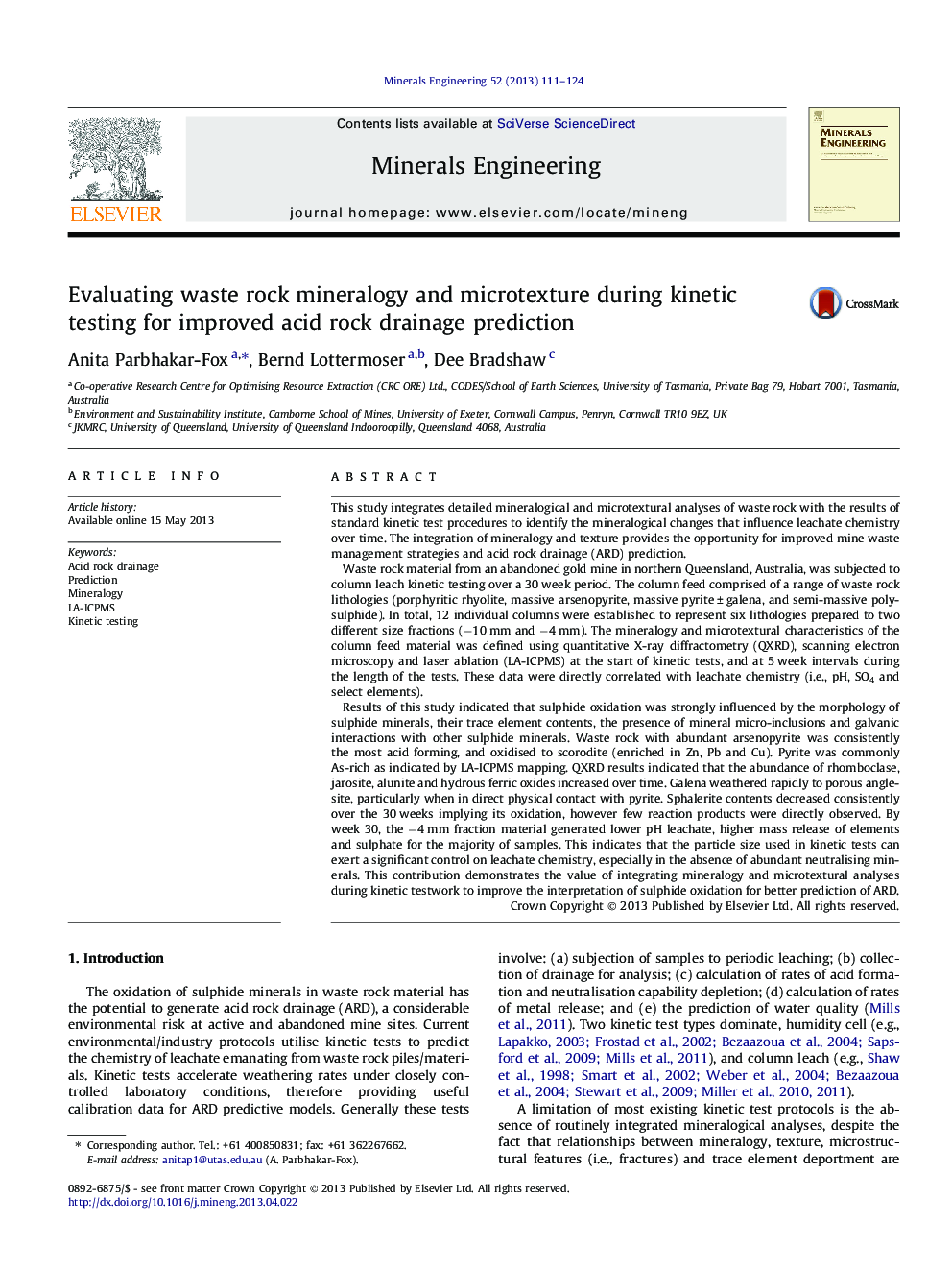| Article ID | Journal | Published Year | Pages | File Type |
|---|---|---|---|---|
| 6673463 | Minerals Engineering | 2013 | 14 Pages |
Abstract
Results of this study indicated that sulphide oxidation was strongly influenced by the morphology of sulphide minerals, their trace element contents, the presence of mineral micro-inclusions and galvanic interactions with other sulphide minerals. Waste rock with abundant arsenopyrite was consistently the most acid forming, and oxidised to scorodite (enriched in Zn, Pb and Cu). Pyrite was commonly As-rich as indicated by LA-ICPMS mapping. QXRD results indicated that the abundance of rhomboclase, jarosite, alunite and hydrous ferric oxides increased over time. Galena weathered rapidly to porous anglesite, particularly when in direct physical contact with pyrite. Sphalerite contents decreased consistently over the 30Â weeks implying its oxidation, however few reaction products were directly observed. By week 30, the â4Â mm fraction material generated lower pH leachate, higher mass release of elements and sulphate for the majority of samples. This indicates that the particle size used in kinetic tests can exert a significant control on leachate chemistry, especially in the absence of abundant neutralising minerals. This contribution demonstrates the value of integrating mineralogy and microtextural analyses during kinetic testwork to improve the interpretation of sulphide oxidation for better prediction of ARD.
Related Topics
Physical Sciences and Engineering
Chemical Engineering
Chemical Engineering (General)
Authors
Anita Parbhakar-Fox, Bernd Lottermoser, Dee Bradshaw,
